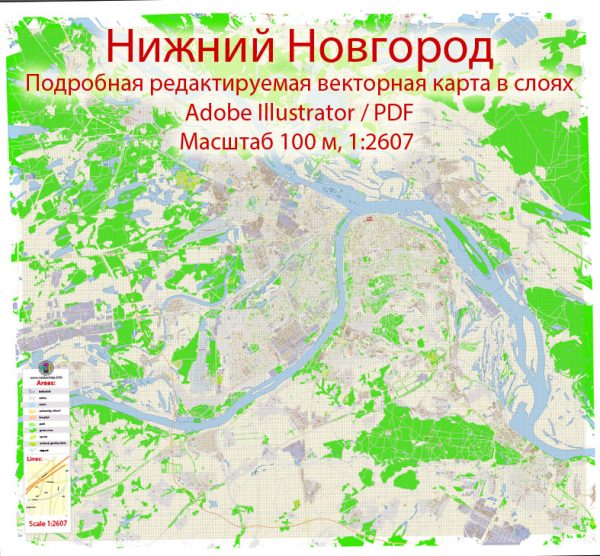Nizhny Novgorod, often simply referred to as Nizhny, is one of Russia’s major cities located on the confluence of the Volga and Oka rivers. The city has a rich history of urban development that spans over several centuries. Here’s an overview of Nizhny Novgorod’s historical urban development:
- Early History (13th-16th centuries): The area where Nizhny Novgorod is situated has a long history of human habitation dating back to ancient times. The city itself was founded in 1221 by Prince Yuri II of Vladimir as a fortress to protect the northeastern borders of the principality. Over the next few centuries, it played a crucial role in defending Russian territories against Mongol invasions.
- Trade and Commerce (17th-18th centuries): Nizhny Novgorod emerged as a significant center for trade and commerce during the 17th and 18th centuries. It became a key trading post between the Russian state and the Asian countries. The city’s strategic location at the confluence of major rivers facilitated the transportation of goods.
- Architectural Development (19th century): The 19th century witnessed substantial architectural development in Nizhny Novgorod. The city’s skyline began to transform with the construction of various neoclassical and eclectic buildings. This era also saw the establishment of educational and cultural institutions, contributing to the city’s intellectual and artistic growth.
- Industrialization (late 19th-early 20th centuries): The late 19th century marked the beginning of industrialization in Nizhny Novgorod. Factories and manufacturing facilities were established, attracting a growing population seeking employment opportunities. This industrial growth significantly influenced the city’s urban landscape, leading to the construction of new residential and industrial areas.
- Soviet Era (20th century): The Soviet period brought further changes to Nizhny Novgorod. The city played a crucial role in military and industrial production during World War II. After the war, Nizhny continued to be an important industrial center, with a focus on heavy machinery and engineering. The city underwent modernization, and new residential districts were developed.
- Post-Soviet Era (1991-present): Following the dissolution of the Soviet Union, Nizhny Novgorod, like many other Russian cities, experienced economic and social changes. The city has made efforts to diversify its economy and attract foreign investment. Urban development has continued, with new infrastructure projects, commercial centers, and residential complexes shaping the city’s contemporary landscape.
Throughout its history, Nizhny Novgorod has maintained its status as a major cultural, economic, and industrial hub in Russia. The juxtaposition of historical architecture with modern developments reflects the city’s dynamic evolution over the centuries.


 Author: Kirill Shrayber, Ph.D.
Author: Kirill Shrayber, Ph.D.